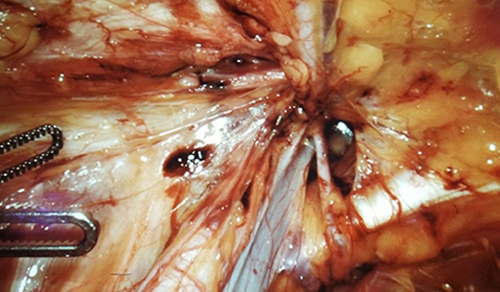Placental Allograft: A Regenerative Therapy for Osteoarthritis

Dr. Alfred C. Gellhorn
“While osteoarthritis is the most common joint disease in the world, we have extremely few effective conservative treatments available,” says Alfred C. Gellhorn, MD, Director of Sports Medicine for the Department of Rehabilitation Medicine at NewYork-Presbyterian/
Dr. Gellhorn is hopeful that he has found just such a solution — an emerging regenerative therapy that involves the injection of micronized dehydrated human amniotic/chorionic membrane (dHACM) allograft. “AmnioFix® is a placental allograft,” explains Dr. Gellhorn. “Women donate their placenta after a scheduled cesarean section. It is then cleaned, sterilized, and checked for anything that is disease-transmissible. Next it is processed into a powder and reconstituted so that we can use it clinically through injection into diseased joints. Placental tissue contains a number of growth factors that are very important in healing and tissue repair. I’ve been using this in the clinic for about four years for both osteoarthritis and tendon disease and finding excellent clinical results.”
Dr. Gellhorn’s research on the efficacy of this treatment approach has been a case series analysis of patients he has treated. Based on the very good outcomes that he has seen, he decided to conduct a larger and more thorough trial with patients who have knee osteoarthritis. “Currently, we are leading a multicenter, double blind, randomized control trial with a very rigorous study design comparing placental allograft with a saline injection and following patients over 12 months to see how their pain levels change,” says Dr. Gellhorn.
The Weill Cornell researchers have recruited 13 centers to date, with a goal of 15 participating sites and a patient enrollment of 300. “This is a large and very powerful study,” notes Dr. Gellhorn. “We are including patients with moderate and painful osteoarthritis of the knee because knee arthritis is the number one joint affected by arthritis, and knee replacement is often not as effective as hip replacement.”
While Dr. Gellhorn by no means considers treatment with placental allograft a cure for osteoarthritis, in his experience the symptomatic effects last from 9 to 12 months. “If we can manage osteoarthritis effectively with a single injection in the knee every year — and indefinitely — then we’ve made an absolutely enormous change in the way people can manage their pain,” he says.
The Repair Process
As Dr. Gellhorn explains, within the placental material there are between 100 and 150 biologically active proteins — all of which work on different metabolic pathways within the joint. The most powerful ones work to decrease inflammation in the joint long term, which is responsible for the pain relief. “Many of the other proteins, at least theoretically, work to repair tissues within the joints such as the synovial lining and meniscus tissue,” he says. “All of those are potentially repairable tissues. I think it is likely that the long-term benefit that patients are getting from this is not just from decreased inflammation, but because the knee is actually repairing itself much more effectively.”
“If we can manage osteoarthritis effectively with a single injection in the knee every year — and indefinitely — then we’ve made an absolutely enormous change in the way people can manage their pain.”
— Dr. Alfred C. Gellhorn
Adding to the complexity of the process is the fact that the architecture of cartilage is extremely complicated. “It’s not just a flat sheet of tissue that you can lay on and repair from the top down,” says Dr. Gellhorn. “It’s got overlapping arches of collagen that comprise the matrix. It’s not enough to have a cell that produces cartilage; it has to produce it in that particular architectural way.”
The researchers’ goal, notes Dr. Gellhorn, is not to regrow cartilage with AmnioFix, but to decrease the rate at which the cartilage is broken down. “We know now that if cortisone injections are done with some regularity, there is a dose-dependent toxic effect on the cartilage. So, even though we’re trying to be helpful by decreasing someone’s pain with these injections, we are trading off a short-term benefit for a major problem down that road.”
Dr. Gellhorn emphasizes that the Weill Cornell investigators are only at the starting point of this research. “There will be many more clinical trials coming out of our group looking at the treatment of musculoskeletal disorders, including arthritis and tendon diseases. We’ll also be working closely with our colleagues in orthopedic surgery. They, too, are very interested in having effective treatment for patients who are not yet candidates for knee replacement.”
Benefit of Placental Allograft over PRP
Injections of platelet-rich plasma (PRP) have been under intense study over the last five years, and Dr. Gellhorn notes that the data now supports the use of PRP. “Nonetheless, one of the main concerns with PRP is that it remains a non-standardized or poorly standardized treatment,” he notes. “There are a variety of kits and different ways to produce the product in clinic, which can lead to problems. Because of this the FDA will not recognize the therapy in a way that is marketable nor is it covered by insurance. Although many of the theoretical reasons to use the placental allograft are similar to PRP, placental allograft is a standardized product and, as such, it can be developed as a drug, which is a primary benefit over PRP.”
Dr. Gellhorn expects that the data on AmnioFix will be collected by the end of 2019, with published results shortly thereafter. “I’m hoping that we will find very positive results that we can rapidly turn over to the FDA for approval and subsequently move forward with additional trials for its use in other joints.”
Reference Article
Gellhorn AC, Han A. The use of dehydrated human amnion/chorion membrane allograft injection for the treatment of tendinopathy or arthritis: A case series involving 40 patients. PM&R. 2017 Dec;9(12):1236-43.
Related Publications

Recovery After Stroke: Assessing a Combined Approach of Vagus Nerve Stimulation and Rehabilitation

Dr. Glen Gillen Appointed Director of OT Programs








